UPSC GS 1
Bushveld Igneous Complex
- News: Recently, scientists discovered living microbes in a 2-billion-year-old rock sample from the Bushveld Igneous Complex (BIC) in South Africa.

- About Bushveld Igneous Complex (BIC):
-
- The Bushveld Igneous Complex (BIC) is the largest layered igneous intrusion found within the Earth’s crust.
- Located in northern South Africa, it is exposed at the edge of the Transvaal Basin and spans a pear-shaped area exceeding 66,000 square kilometers.
-
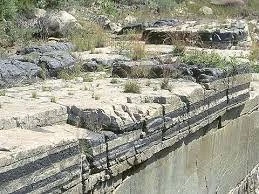
- Key Features:
-
- Thickness: The BIC varies in thickness, reaching up to 9 kilometers (5.6 miles) in some areas.
- Rich Ore Deposits: It is renowned for housing some of the richest ore deposits globally.
- Platinum-Group Metals (PGMs): The complex contains the largest reserves of PGMs, including platinum, palladium, osmium, iridium, rhodium, and ruthenium.
- Other Minerals: In addition to PGMs, the BIC also holds vast quantities of iron, tin, chromium, titanium, and vanadium.
-
- Structure of the BIC:
-
- The BIC is divided into an eastern lobe and a western lobe, with a further northern extension.
- All three sections of this geological system were formed around 2 billion years ago.
-
- Formation Process:
-
- Molten Rock Injections: The formation of the BIC began when vast amounts of molten rock from the Earth’s mantle were brought to the surface through long vertical cracks in the crust, creating this geological intrusion.
- Layered Structure Development: Over time, the effects of these injections, combined with the crystallization of various minerals at different temperatures, led to the development of a structure resembling a layered cake. This structure includes distinct rock strata featuring three PGM-bearing layers, commonly referred to as reefs.
-
Read also: White Revolution 2.0: New Dairy Frontier for India’s Growth | UPSC
Battle of Walong
- News: To mark the 62nd anniversary of the iconic battle of Walong during the 1962 war with China, the Army is planning a month-long series of commemorative events.
- About the Battle of Walong:
-
- The Battle of Walong took place during the 1962 Sino-Indian War at the easternmost tip of Arunachal Pradesh, near the tri-junction of India, China, and Myanmar.
-
- Strategic Importance:
-
- Location: Walong served as the only advanced landing ground in the region, playing a crucial role in connecting remote border posts and supply routes.
- Offensive Focus: Following Tawang, Walong became the primary target for China’s offensive in the eastern sector of the war.
-
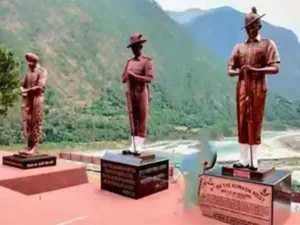
- Military Disparities:
-
- Chinese Forces: The Chinese military boasted overwhelming numbers, with approximately 15,000 soldiers compared to India’s 2,500, equipped with superior weaponry and artillery.
- Indian Defense: Despite being heavily outnumbered and outgunned, Indian troops exhibited extraordinary determination and resilience.
-
- Indian Army Involvement:
-
- Units Engaged: The defense was conducted by various battalions, including those from the Kumaon Regiment, Sikh Regiment, Gorkha Rifles, Assam Rifles, and Dogra Regiment.
- Duration of Resistance: Indian forces managed to hold off the Chinese advance for nearly three weeks, despite facing severe shortages of ammunition and supplies.
-
- Casualties and Legacy:
-
- Losses: The battle resulted in significant casualties for India, with around 830 soldiers either killed, wounded, or captured.
- Symbol of Valor: The defense of Walong stands as a powerful testament to the bravery and sacrifice of the Indian Army, marking it as the only instance of an Indian counterattack during the 1962 war.
-
UPSC GS 2
Third-Party Litigation Funding (TPLF)
- News: In India, where ‘justice for all’ has long been a constitutional dream, Third-Party Litigation Funding might help turn it into reality.
- About Third-Party Litigation Funding (TPLF):
-
- Third-Party Litigation Funding (TPLF), also known as litigation finance, is a financial arrangement where an external party with no prior involvement in the dispute provides funding to support a plaintiff in pursuing a legal claim.
-
- Key Features of TPLF:
-
- Return on Investment for the Funder: If the case is successful, the third-party funder receives a share of the proceeds.
- No Repayment Obligation for Plaintiffs: If the lawsuit fails, the plaintiff is not required to repay the funder.
- Risk Mitigation: TPLF allows claimants to pursue legal action without bearing the financial risks of litigation.
-
- Factors Driving the Emergence of TPLF:
-
- Rising Legal Costs: Increasing expenses associated with legal proceedings have made external funding an attractive option.
- Complex Litigation Processes: The growing complexity of modern legal disputes encourages the use of TPLF.
- Balancing Financial Inequality: TPLF provides plaintiffs with limited resources a chance to compete fairly against financially stronger opponents.
-
- Types of Disputes that Attract TPLF:
-
- Commercial Contracts: Disputes arising from business agreements.
- International Commercial Arbitration: Cross-border business disputes.
- Class Action Lawsuits: Claims brought by groups seeking collective redress.
- Tortious Claims: Cases such as medical malpractice and personal injury claims.
- Anti-Trust Proceedings: Legal actions addressing monopolistic practices or unfair trade.
- Insolvency Cases: Disputes involving bankrupt entities with potential for monetary recovery.
-
- Status of TPLF in India:
-
- No Explicit Prohibition: TPLF is not explicitly banned under Indian law.
- Judicial Endorsement: Indian courts have recognized the potential benefits of TPLF and emphasized the need for its regulation to ensure fair and transparent practices.
-
Drugs Technical Advisory Board
- News: The Drugs Technical Advisory Board has recommended the inclusion of all antibiotics in the definition of new drugs in the New Drugs and Clinical Trial (NDCT) Rules, 2019.
- About Drugs Technical Advisory Board (DTAB):
-
- The Drugs Technical Advisory Board (DTAB) is the highest statutory decision-making body on technical matters related to drugs in India.
- It operates under the framework of the Drugs and Cosmetics Act, 1940 and functions as part of the Central Drugs Standard Control Organization (CDSCO).
-
- Function of DTAB:
-
- Advisory Role: Provides recommendations to the Central and State Governments on technical matters related to the administration of the Drugs and Cosmetics Act, 1940.
- Execution of Assigned Duties: Performs additional functions as assigned under the Act.
-
- Nodal Ministry: Ministry of Health and Family Welfare oversees the activities and functioning of DTAB.
- What is a New Drug? Definition under Rule 122E of the Drugs and Cosmetic Rules, 1945:
-
- Unapproved Drugs: A drug that has not previously been used in India or lacks recognition by the licensing authority for the proposed claims.
- Modified or New Claims: Even an already approved drug may be classified as a new drug if it comes with altered claims such as new indications, dosage modifications, or a different route of administration.
-
- Implications of a New Drug Classification:
-
- Regulation of Antibiotics: If antibiotics are categorized under the new drug bracket, detailed documentation will be required for their manufacture, marketing, and sale.
- Central Government Clearance: Manufacturing and marketing approvals will need to be obtained from the Central Government rather than the State drug administration.
- Prescription Requirement: Antibiotics classified as new drugs will be available only through a valid prescription from a medical professional.
-
Doctrine of Lis Pendens
- News: The Supreme Court has reiterated that once a transaction is found to be hit by the doctrine of lis pendens, then the defences of being a bona fide purchaser and lack of notice regarding the sale agreement are not available.
- Definition: The term ‘lis pendens’ translates to “a pending legal action.”
- Maxim: This legal maxim emphasizes that during the course of litigation, no new actions should be introduced that might affect the parties involved, thereby maintaining the status quo.
- Principle: The doctrine is grounded in the principle that the subject matter of a lawsuit (i.e., the property in question) should not be transferred to a third party while the litigation is ongoing.
- Legal Framework:
-
- Transfer of Property Act, 1882: This doctrine is outlined in Section 52 of the Transfer of Property Act, which states that any transfer of immovable property during ongoing litigation will not affect the rights of the parties involved.
- Binding Nature: Any ruling made by a competent court regarding the matter during the litigation will be binding on any purchaser who acquired the property during this period, regardless of whether the purchaser was involved in the action or was aware of the pending litigation.
-

- Purpose:
-
- Protection of Rights: The doctrine serves to safeguard the rights and interests of all parties engaged in litigation concerning a specific property.
-
- Effect of the Doctrine of Lis Pendens:
-
- Nature of Transfer: The rule of lis pendens does not invalidate the transfer; instead, it renders the transfer subject to the outcome of the litigation.
- Binding Judgment: According to this rule, any individual who purchases property during the pendency of a lawsuit is bound by the judgment rendered against the party from whom they acquired the title, even if they were not a participant in the case or lacked knowledge of the ongoing litigation.
-
- Conditions for Applicability: The Supreme Court has outlined the essential criteria for the applicability of the rule of lis pendens under Section 52:
-
- The lawsuit must be actively proceeding.
- The suit must be filed in a court that has competent jurisdiction.
- The title to the immovable property must be directly and specifically at issue.
- The suit must directly impact the rights of the other party involved.
- The property in question is being transferred by either of the parties.
- The suit must not be collusive (i.e., it cannot be based on fraud or collusion to obtain a decree).
-
- Non-Applicability of the Doctrine: The doctrine does not apply in certain situations, including:
-
- Sales made by a mortgagor exercising their power under the mortgage deed.
- Cases where only the transferor is affected.
- Situations involving collusive proceedings.
- Instances where the property is inaccurately described, rendering it unidentifiable.
- Cases where the right to the property is not directly in question, allowing for permitted alienation.
-
UPSC GS 3
IndiaAI Mission
- News: The IndiaAI Mission has selected eight Responsible AI projects in response to the Expression of Interest (EoI) issued under the Safe and Trusted AI Pillar.
- About:
-
- The IndiaAI Mission aims to establish a robust ecosystem, foster AI-driven innovation, and promote ethical, transparent, and reliable AI usage across various sectors.
-
- Implementing Agency:
-
- IndiaAI, an Independent Business Division (IBD) under the Digital India Corporation, is responsible for implementing the mission.
- Operating under the Ministry of Electronics and Information Technology (MeitY), it plays a key role in advancing the Digital India initiative.
-
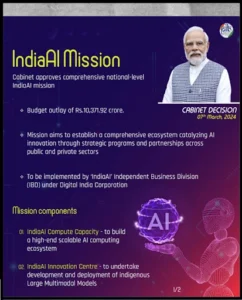
- Objectives of the IndiaAI Mission:
-
- Ensuring Inclusive Access to AI: The mission seeks to ensure that AI-driven benefits are accessible across all social and economic strata.
- Promoting Technological Self-Reliance: It focuses on developing indigenous AI tools and frameworks tailored to Indian datasets.
- Aligning with Inclusive Growth: The mission supports India’s vision of inclusive development through the adoption of AI technologies.
- Establishing India as a Global AI Leader: Strengthening India’s position as a key player in the global AI landscape is a primary objective.
-
- Themes of Responsible AI Projects:
-
- Machine Unlearning: Focuses on removing the influence of specific data points from AI models without compromising individual user information.
- Synthetic Data Generation: Involves creating artificial datasets to safeguard privacy while enabling AI development.
- AI Bias Mitigation: Develops strategies to minimize biases within AI models, ensuring fair and balanced outcomes.
- Ethical AI Frameworks: Establishes guidelines for the responsible and ethical application of AI technologies.
- Privacy-Enhancing Tools: Ensures that AI systems adhere to privacy standards and protect user data effectively.
- Explainable AI: Works on enhancing transparency by making AI systems’ decision-making processes understandable to users.
- AI Governance Testing: Develops standards for evaluating the governance and compliance practices in AI systems.
- Algorithm Auditing Tools: Provides comprehensive tools for scrutinizing and validating the performance of AI algorithms.
-
Graded Response Action Plan
- News: Delhi Environment Minister Gopal Rai announced that Stage-I of the Graded Response Action Plan (GRAP) has been implemented in Delhi-NCR to tackle rising air pollution.
- About Graded Response Action Plan (GRAP):
-
- GRAP is a strategic framework aimed at controlling air pollution in the Delhi-NCR region.
- It serves as an emergency response system, with activation triggered when the Air Quality Index (AQI) reaches “poor” levels, especially during winter when air quality worsens significantly.
-
- Implementing Agency:
-
- Commission for Air Quality Management (CAQM): Oversees the implementation of GRAP in NCR and nearby regions.
- Collaboration with MoEFCC: CAQM works closely with the Ministry of Environment, Forest, and Climate Change (MoEFCC).
- Dedicated Sub-Committee: CAQM has set up a sub-committee to operationalize GRAP.
-
- Members: Officials from CAQM, member secretaries of the pollution control boards of Delhi, Uttar Pradesh, Haryana, Rajasthan, the Central Pollution Control Board (CPCB), a scientist from the India Meteorological Department (IMD), a representative from the Indian Institute of Tropical Meteorology (IITM), and a Health Advisor.
- Meetings and Orders: The sub-committee convenes frequently to issue necessary orders and activate relevant GRAP stages.
- Conflict Resolution: In case of conflicts between the directions of state governments and CAQM, the CAQM’s decisions prevail.
- Stages of GRAP and AQI Thresholds: Each stage of GRAP involves specific actions to mitigate pollution, with increasing intensity based on air quality levels.
-
- Stage I – “Poor” Air Quality: AQI between 201-300
- Stage II – “Very Poor” Air Quality: AQI between 301-400
- Stage III – “Severe” Air Quality: AQI between 401-450
- Stage IV – “Severe+” Air Quality: AQI above 450
-
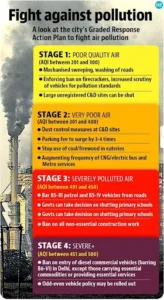
- What is the Air Quality Index (AQI)?
-
- Purpose: AQI measures air pollution levels and communicates associated health risks to the public.
- Health Impact: Higher AQI values indicate more severe health concerns.
- Calculation: The AQI is derived from pollutant concentrations over a specific period, with results categorized into ranges, each with corresponding health advisories.
-
- AQI Categories and Health Indicators:
-
- 0-50: Good
- 51-100: Satisfactory
- 101-200: Moderate
- 201-300: Poor
- 301-400: Very Poor
- 401-450: Severe
- Above 450: Severe+
-
Diphtheria
- News: A three-year-old girl died of suspected diphtheria in Punjab’s Faridkot recently in what may be the first case of the bacterial infection in the state this year.
- About Diphtheria:
-
- Nature of Infection: Diphtheria is a serious, contagious bacterial infection primarily affecting the nose and throat.
- Causative Agent: The infection is caused by strains of the bacterium Corynebacterium diphtheriae, which produces a toxin.
-
- Transmission:
-
- Person-to-Person Spread: Diphtheria typically spreads through respiratory droplets from activities like coughing or sneezing.
- Contact with Infected Sores: Individuals can also contract the disease by touching infected open sores or ulcers.
- Skin Infections: While the bacteria can cause skin infections leading to open sores or ulcers, these cases rarely result in severe illness.
-
- Complications:
-
- Although diphtheria is treatable with medication, if it progresses to advanced stages, the bacterial infection may lead to damage to critical organs, including the heart, kidneys, and nervous system.
-
- Symptoms:
-
- Common Symptoms: Typical signs of diphtheria include a sore throat, fever, swollen neck glands, and general weakness.
- Characteristic Coating: Within 2–3 days of infection, dead tissue in the respiratory tract can form a thick, grey coating that covers the tissues in the nose, tonsils, and throat, making breathing and swallowing difficult.
-
- Treatments:
-
- Diphtheria Antitoxin (DAT): Neutralization of unbound toxins using Diphtheria Antitoxin is a critical treatment step.
- Antibiotics: Antibiotics are administered to prevent further bacterial growth.
- Supportive Care: Continuous monitoring and supportive care are essential to manage complications such as airway obstruction and myocarditis.
-
Read also: One Nation One Election: Impact on Indian Democracy | UPSC
Hellfire Missiles
- News: India recently concluded a deal with the US for the procurement of 170 AGM-114R Hellfire missiles.
- About the Hellfire Missile:
-
- The AGM-114 Hellfire missile is a widely used short-range air-to-ground missile, and in some instances, air-to-air missile, known for its laser-guided precision.
- It is employed by the United States military as well as approximately 30 allied nations.
-
- Development History:
-
- Initiation: The development of the AGM-114 Hellfire began in 1972 to fulfill the U.S. Army’s requirement for a helicopter-launched anti-tank missile capable of countering Soviet armored formations.
-
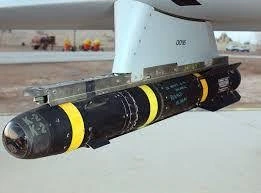
- Target Capabilities: Target Types: The Hellfire missile is designed to engage various targets, including:
-
- Armored vehicles (tanks)
- Bunkers and fortified positions
- Radar systems and antennas
- Communications equipment
- Soft targets
- Hovering helicopters
-
- Use in Unmanned Aerial Vehicles (UAVs): The missile is a preferred choice for multiple UAVs, including:
-
- MQ-1B Predator
- MQ-9 Reaper
- MQ-1C Grey Eagle
-
- Features:
-
- Dimensions:
- Length: 1.62 meters
- Diameter: 17.7 centimeters
- Wingspan: 0.71 meters
- Weight: Each missile weighs between 45.4 kg and 49 kg, which includes an 8 kg to 9 kg multipurpose warhead.
- Propulsion: It is powered by a single-stage solid-propellant rocket motor.
- Velocity: The missile can reach a maximum speed of 950 mph.
- Range: The operational range is between 7 km and 11 km.
-
- AGM-114R Multipurpose Missile:
- Latest Variant: The AGM-114R, also known as the Hellfire Romeo, represents the latest advancement in the Hellfire II missile series.
- Integration of Capabilities: This variant incorporates the functionalities of all preceding Hellfire II models.
- Launch Platforms: The AGM-114R can be launched from various platforms, including:
-
- Fixed-wing aircraft
- Helicopters
- Surface ships
- Military ground vehicles
-
- Guidance System: It utilizes a semi-active laser guidance system along with an integrated blast fragmentation sleeve warhead, enabling it to effectively engage targets that previously required multiple Hellfire variants to destroy.

